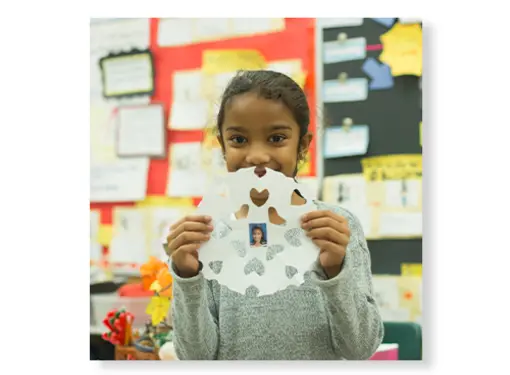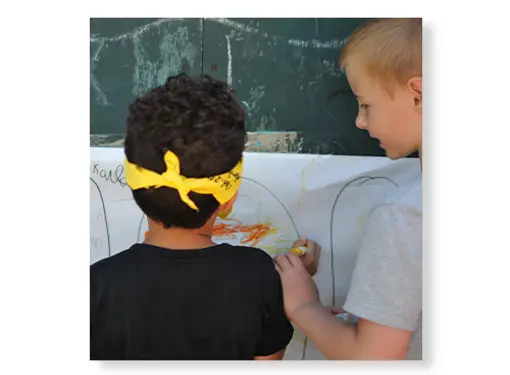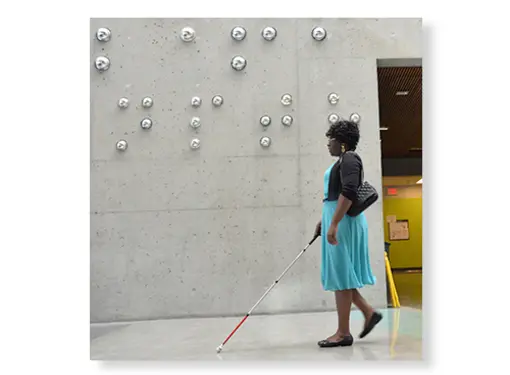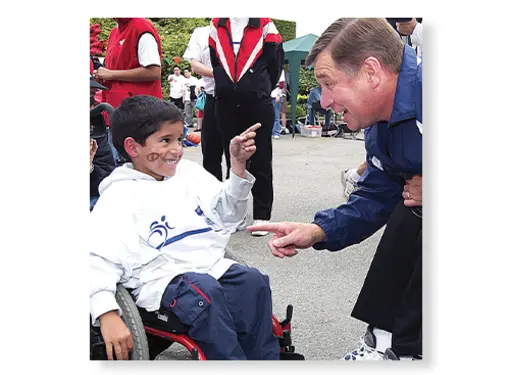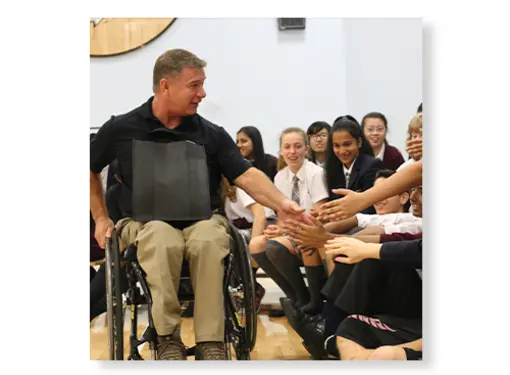Help your students combat bullying by celebrating kindness.
For youth with disabilities, exclusion is one of the most common forms of bullying, from social groups, organized activities and even community spaces. When your classrooms, playgrounds and after- school activities are inclusive of kids of all abilities, it’s easier to foster a community which welcomes diversity among your students.
Inclusion is an act and an attitude, and it starts with kindness and understanding. By teaching your students the value of diversity and kindness, you empower them to become champions for an inclusive world.
Rick Hansen Foundation Ambassador Speakers are individuals with disabilities who share their stories in virtual presentations to students, teaching youth about the importance of inclusion and accessibility. Book an ‘Inclusion Matters!’ presentation for your class. You will also receive age- appropriate activities for before and after the presentation to continue the conversation.
Inclusion Matters: Ambassador Presentation Preview
Bullying in Canadian Schools
Bullying isn’t always visible or obvious, but it’s more present than you think. Many students who are bullied never talk about it, or may not realize being taunted for a difference is wrong.
Resources
Try these lesson plans for Bullying Awareness and Prevention Week to start the conversation about disability inclusion, kindness, and making a difference. If you book one of our Ambassador Presentations, you will also receive grade-appropriate activities for before and after the presentation.
We are Like Snowflakes (K - Gr. 2)
Students compare similarities and differences between children, including those with disabilities and learn that children with disabilities like to do many of the same activities that we all do.
A Day in Your Shoes (K - Gr. 2)
Students are put into groups and given a scenario where they consider what it would be like to be someone else and how they would like to be treated in the given scenario.
Let’s Play: Inclusive Playgrounds (Gr. 3 - 5)
Students put their school playground to the test by conducting an accessibility review. Students determine how accessibility and inclusion could be improved in school community.
A Day in the Life (Gr. 6 - 8)
Students reflect on a typical week in their own life. Then, they imagine and reconsider their regular activities from the perspective of a person with a disability. Students portray this by creating a “Day in the Life” of a person with a disability art project
First Impressions and Stereotypes (Gr. 6 - 8)
Students complete an exercise evaluate how first impressions can be misleading, and discuss their misconceptions. They will learn about the life of Rick Hansen and how first impressions affected him.
Peer Advocacy (Gr. 9 - 12)
Students work in groups to brainstorm peer advocacy solutions for pre-created school scenarios.

